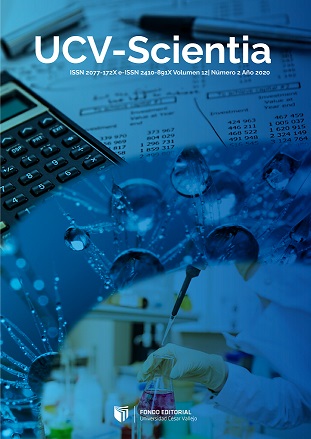EMPLE-AP regional labor observatory: scope, users and model
DOI:
https://doi.org/10.18050/revucv-scientia.v12i2.807Keywords:
Employability, Labor observatory, Higher educationAbstract
This research focuses its attention on higher education employability observatories, which are understood as platforms that contribute to the employment of their graduates, presenting the results of the activities carried out by the so-called Work Package 4 within the framework of the ERASMUS+ EMPLE-AP project. Since the main objective of the study was to define the scope of a regional labor observatory in the countries of the Pacific Alliance, as well as to determine the articulation of its capacities in relation to the demands of its stakeholders, a qualitative approach of an emergent nature was used, with interviews and focus groups as data collection instruments. As far as the population and sample were concerned, the aforementioned instruments were applied, through the project partners, to professionals and users of labor observatories in Italy, Portugal, Mexico, Colombia, Peru and Chile. Later on, using the content analysis technique, the products, functions, structures and competencies required by the operation of a labor observatory were defined according to the requirements of the project.
References
Angulo Marcial, N. (2009). ¿Qué son los observatorios y cuáles son sus funciones? Innovación Educativa, 9(47). Recuperado de: https://n9.cl/ysjm
Carbajal, F. (2019). #EmprenderConectados. Buenos Aires: Editorial Abrapalabra.
European Employment Policy Observatory. (2013). Employment, Social Affairs & Inclusion. European Commission. Recuperado de: https://n9.cl/g7gx
Farné, S. (2011). Observatorios del mercado de trabajo: ¿qué son y cómo funcionan? Revista de Economía Institucional, 13(24), 429-445. ISSN: 0124-5996. Recuperado de: https://www.redalyc.org/articulo.oa?id=419/41921223017
García-Blanco, M. y Cárdenas-Sempértegui, E. (2018). La inserción laboral en la Educación Superior. La perspectiva latinoamericana. Educación XXI, 21(2), 323-347, doi: 10.5944/educXX1.16209
Hernández-Sampieri, R. y Mendoza, C. (2018). Metodología de Investigación. Las rutas cuantitativa, cualitativa y mixta. México: McGraw-Hill.
Márquez, Y. P. (2016). Los Observatorios Sociales. Cuadernos de Investigaciones de Ciencias de la Información, (1), 80-100, doi: https://doi.org/10.34295/cuinci.vi1.8
Orellana, N. (2018). Consideraciones sobre empleabilidad en educación superior. Calidad en la educación, 48, 273-291. Doi: https://dx.doi.org/10.31619/caledu.n48.477
Observatorio Nacional. (2020). Quiénes somos. Chile: Sence. Recuperado de: http://www.observatorionacional.cl/quienes-somos
Observatorio Laboral. (2013). Documentación del proyecto. San José: OIT. Recuperado de: https://n9.cl/s6x89
OBECAM. (2019). Qué es el OBECAM. España: Gobierno de Canarias. Recuperado de: https://n9.cl/50pa
Downloads
Published
How to Cite
Issue
Section
License
Copyright (c) 2020 UCV-Scientia

This work is licensed under a Creative Commons Attribution-NonCommercial 4.0 International License.
- Share — copy and redistribute the material in any medium or format
- Adapt — remix, transform, and build upon the material.
- The licensor cannot revoke these freedoms as long as you follow the license terms.
Under the following terms:
-
Attribution — You must give appropriate credit, provide a link to the license, and indicate if changes were made. You may do so in any reasonable manner, but not in any way that suggests the licensor endorses you or your use.
- No additional restrictions — You may not apply legal terms or technological measures that legally restrict others from doing anything the license permits.













